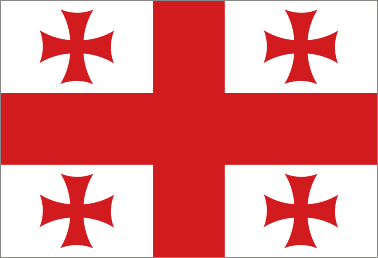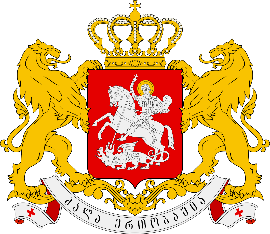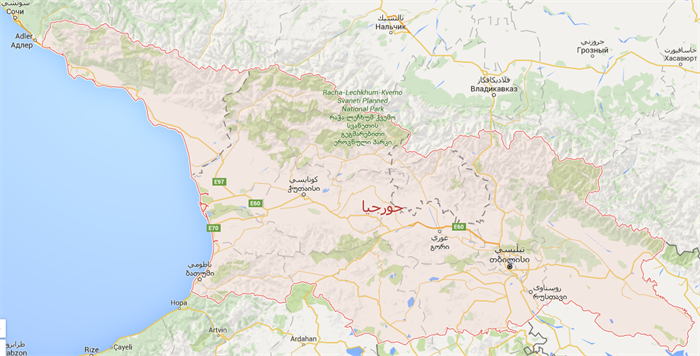Georgia is a sovereign state in the Caucasus region of Eurasia. Located at the crossroads of Western Asia and Eastern Europe, it is bounded to the west by the Black Sea, to the north by Russia, to the south by Turkey and Armenia, and to the southeast by Azerbaijan. Georgia covers a territory of 69,700 square kilometres and its population is about 3.7729 million.
Georgia’s history goes back to kingdoms of Colchis and Iberia and it is one of the first countries that adopted Christianity in the fourth century. Georgia reached the peak of its political and economic glory during the rule of King David the Builder and Queen Tamar in XI-XII centuries. In the beginning of the nineteenth century, Georgia became part of Russian Empire. After a short period of independence following the Russian revolution in 1917, the Bolshevik armies invaded Georgia in 1921 and the country was annexed by the Soviet Union in 1922. Georgia regained its independence in 1991. Like many other countries, that gained independence from the Soviet Union, Georgia has suffered from the economic crisis and internal unrest during the nineties. After the Rose Revolution new political leadership emerged with democratic reforms, and nowadays works are underway to further develop those reforms.
| Georgia (according to State Name given in Georgian Constitution) | Official Name |
| 
| Flag |
| 
| Coat of Arms |
| Tbilisi | Capital |
| Kutaisi, Rustavi, Batumi, Sokhumi, Gori, Poti, Zugdidi, Telavi | Other Cities |
| Eastern Orthodox Christianity | Religion |
| Georgian (and + Abkhazian in breakaway region of Abkhazia) | Official Language |
| GET(UTC+4) | Time zone |
| Saturday and Sunday | The official weekly holiday |
| 9 April, 1991 | Independence |
| Giorgi Margvelashvili | President |
| 69,700km2 | Area |
| Georgian Lari (1$ is equivalent to approximately 2.30 Lari) | National Currency |
| 3,720,400 | Number of Population (2016) |
| 13,959 Billion USD | Gross National Income (2015) |
| 3000 USD | Per Capita Gross National Income (2015) |
| 2.8% | Growth Rate of GDP (2015) |
| 4.1% | Annual Rate of Inflation (March, 2016) |
| Copper ores and concentrates, manganese, iron, coal, and oil. | Natural Resources |
| Fuel, petroleum and other gases, cars, grains and other foods, machinery, transport equipment. | Main Imports |
| Copper ores and concentrates, automobiles, mineral waters, wine, nuts (fresh and dried), citrus fruits, and other agricultural products | Main Exports |
| Russia (from the north)
Azerbaijan (from the southeast)
Armenia (from the south)
Turkey (from the southwest) | Neighbors |
| Map of Georgia
 |
Geography:
Georgia is located in the South Caucasus region of Eurasia, in Western Asia and Eastern Europe. The Greater Caucasus Mountain Range, which is generally known as the boundary between Europe and Asia, stretches along the northern border and separates Georgia from Russia. Mountains cover big part of the Georgian geographical landscape.
The highest mountain in Georgia is Mount Shkhara at 5,068 meters (16,627 feet) above sea level, followed by Mount Janga (Dzhangi-Tau) at 5,058 meters (16,594 feet). There are other notable peaks like Mount Kazbek (Kazbegi) (5,047 m / 16,558 ft), Tetnuldi (4852 m / 15,918 ft), Shota Rustaveli (4960 m / 16,273 ft), Mount Ushba (4700 m /15,420 ft), and Ailama (4525 m / 14,846 ft).
Climate:
The climate of Georgia is extremely diverse due to its geographical location. The weather is rapidly changing and unpredictable, but in general, the it is hot and rainy in summer and cold in winter, where snow often falls during the months of December and January.